Mulhouse, located in the Alsace region of northeastern France, has a unique history that reflects its industrial and cultural evolution. Originally a small artisan town, it grew into a significant industrial center in the 18th and 19th centuries, particularly in textile manufacturing. The city’s textile industry made it a hub for innovation in weaving, dyeing, and machinery production. Mulhouse maintained a distinct identity by briefly operating as a Swiss-style republic, separate from surrounding territories. Over centuries, it has integrated French, German, and Swiss cultural influences, shaping its architecture, language, and culinary traditions. Today, Mulhouse stands as a vibrant city that preserves its industrial past through museums, architecture, and cultural festivals, while offering modern amenities for travelers. Its history attracts historians, engineers, and culture enthusiasts alike, making it a top destination for heritage tourism.
Cité de l’Automobile – Schlumpf Collection
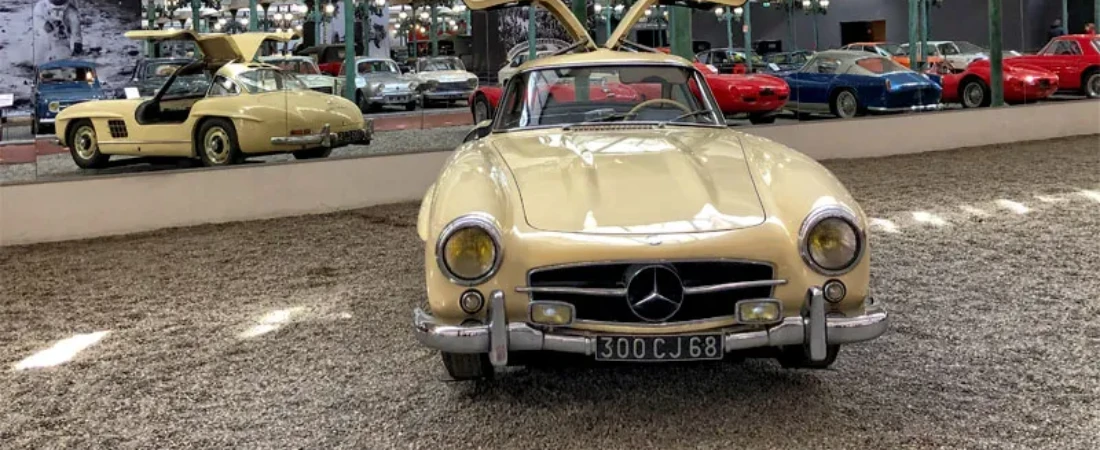
History of the Schlumpf Collection
The Schlumpf Collection, now housed in the Cité de l’Automobile, began as a private collection of brothers Hans and Fritz Schlumpf. In the mid-20th century, the Schlumpfs, wealthy textile industrialists, amassed one of the world’s largest collections of classic and luxury cars, with a particular focus on Bugattis. Originally hidden from the public, the collection was later seized by French authorities after financial difficulties. Today, it is open to visitors as a museum celebrating automotive history. The collection illustrates the passion and dedication of collectors who preserved rare vehicles that might otherwise have been lost to history.
Key Vehicles and Rare Exhibits
The museum houses over 400 vehicles, spanning from early 20th-century cars to post-WWII models. Highlights include rare Bugatti Type 35 racing cars, luxury pre-war vehicles, and unique concept cars. Each exhibit is carefully maintained, allowing visitors to see engineering craftsmanship and design evolution. Classic cars are displayed in chronological and thematic order, demonstrating both aesthetic beauty and mechanical innovation. The museum is ideal for photography enthusiasts, offering striking visuals of polished automobiles in curated settings.
Bugatti Collection Highlights
Bugatti vehicles are the centerpiece of the collection. Iconic models include Type 35 Grand Prix racers, Type 41 “Royale,” and Type 57s. Each car represents a period in automotive design history, showcasing speed, luxury, and mechanical precision. The museum provides detailed descriptions, including technical specifications, production history, and historical significance. Bugatti enthusiasts often spend hours studying these rare models, many of which are considered masterpieces of automotive art.
Post-WWII Cars and Modern Vehicles
Beyond vintage classics, the museum features post-WWII vehicles, including early sports cars, concept vehicles, and limited-edition production models. Visitors can trace the evolution from handmade craftsmanship to industrial production, understanding how technology and design changed through decades. Modern innovations like aerodynamics, engine performance, and safety features are highlighted to contrast with earlier cars. This section of the museum appeals to both automobile historians and casual enthusiasts.
Museum Layout and Zones
The Cité de l’Automobile is divided into thematic zones, each focusing on different eras or types of vehicles. Exhibits are arranged chronologically, allowing visitors to experience the progression of automotive technology. Separate areas showcase racing cars, luxury vehicles, and industrial designs. Multimedia displays, video presentations, and interactive kiosks provide historical context. Maps and guided routes help visitors navigate the museum efficiently, ensuring a comprehensive experience without missing key exhibits.
Interactive Exhibits and Workshops
In addition to static displays, the museum offers interactive exhibits and workshops. Visitors can engage with historical documentation, mechanical models, and simulations. Workshops allow children and adults to understand engineering principles, automotive design, and historical restoration techniques. These educational features make the museum appealing for families, school groups, and technical enthusiasts, providing hands-on learning experiences alongside traditional exhibits.
Guided Tours and Accessibility
Guided tours are available in multiple languages, offering detailed insights into the collection, history, and significance of each vehicle. Tour guides provide anecdotes about the Schlumpf brothers, the automotive industry, and specific rare cars. The museum is wheelchair accessible, with ramps and elevators connecting exhibit halls. Visitor services include seating areas, clear signage, and accessible restrooms, ensuring a comfortable visit for all guests.
Visitor Facilities and Cafes
The museum includes amenities such as cafés, restaurants, and gift shops. Cafés offer refreshments and light meals, ideal for taking a break during the tour. The gift shop features model cars, books, and automotive memorabilia. Parking is available for private vehicles and buses, and public transport options connect the museum to Mulhouse city center. These facilities enhance the overall visitor experience, combining education with leisure.
Tips for Families and Children
The museum is family-friendly, with interactive exhibits, workshops, and guided activities for children. Young visitors can explore car mechanics, participate in educational games, and learn about racing history. Audio guides and activity sheets are available in multiple languages. Families are advised to plan at least 2–3 hours for a thorough visit, including breaks at cafés or outdoor spaces.
Best Visiting Times
Cité de l’Automobile is open daily, typically from 9:00 AM to 6:00 PM, with extended hours during peak seasons. Early morning or late afternoon visits are recommended to avoid crowds. Weekdays are generally quieter than weekends, making it easier to explore exhibits at a relaxed pace. Seasonal events and temporary exhibitions may require booking in advance. Tickets can be purchased online or on-site, and combined museum passes with Cité du Train provide value for multi-day visitors.
Address: Cité de l’Automobile, 192 Avenue de Colmar, 68100 Mulhouse, France
Cité du Train – France’s Largest Railway Museum
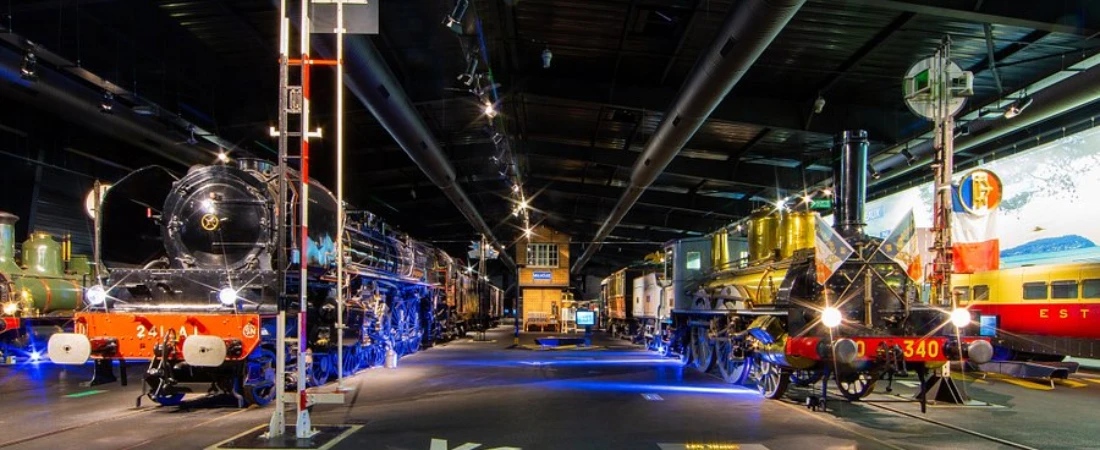
Museum History and Significance
Cité du Train in Mulhouse is the largest railway museum in France and one of the most important in Europe. Established to preserve France’s railway heritage, it showcases the evolution of train transport from the 19th century to modern times. The museum’s collection includes over 100 locomotives and 200 train carriages, each carefully restored. It highlights the technical, economic, and social impact of railways on France and Europe. The museum is especially valuable for history enthusiasts, families, and engineering students who want to explore industrial heritage in a hands-on, interactive environment.
Address: Cité du Train, 2 Rue Alfred de Glehn, 68200 Mulhouse, France
Steam Locomotives Collection
The museum’s steam locomotive section is a highlight, featuring iconic engines from France’s railway history. Visitors can explore fully restored models, including freight and passenger locomotives. Information panels explain technical specifications, operational history, and the role of steam engines in industrialization. Steam locomotives from the early 19th century demonstrate mechanical engineering advancements, boiler systems, and driving techniques. Photographers and railway enthusiasts will find this section particularly captivating due to the intricate details and preserved industrial machinery.
Electric and Diesel Engines
Beyond steam, Cité du Train displays electric and diesel locomotives that revolutionized rail travel in the 20th century. The exhibits explain how electricity and diesel engines increased efficiency, speed, and comfort. Visitors can compare energy sources, engine designs, and performance metrics. Some locomotives include original driver compartments, offering an immersive experience. Special attention is given to French high-speed train models, highlighting technological innovation and national engineering achievements.
Special Train Carriages and Royal Cars
The museum also preserves unique passenger carriages, including royal and luxury cars used by French royalty and dignitaries. These carriages feature elaborate interiors, polished woodwork, and fine upholstery. Exhibits explain the social context of train travel in different eras, illustrating how trains reflected class distinctions and design trends. Visitors can walk through some carriages to experience the luxury of historical travel firsthand.
Interactive Simulators and Workshops
Cité du Train offers interactive experiences for visitors of all ages. Simulators allow guests to “drive” locomotives, learning about speed, braking, and track navigation. Workshops demonstrate mechanical principles, historical maintenance techniques, and model railway construction. Children and students benefit from hands-on learning, making the museum educational as well as entertaining. Workshops are periodically updated with seasonal themes or special exhibitions.
Historical Exhibits of French Railways
The museum contextualizes each locomotive with historical displays, photos, and documents. Exhibits cover railway expansion, technological breakthroughs, wartime logistics, and the economic role of trains in connecting French cities. Multimedia presentations, including archival videos and audio recordings, enhance the storytelling. Visitors gain a comprehensive understanding of rail transport’s evolution from steam engines to modern TGVs.
Guided Tours and Family Activities
Guided tours provide expert insights into locomotive history, museum highlights, and engineering details. Family-oriented tours include storytelling sessions, interactive games, and model railway demonstrations. Audio guides are available in French, English, and German. Families are advised to allocate 2–3 hours for a full visit, combining guided tours with interactive activities and carriage exploration.
Accessibility and Visitor Facilities
Cité du Train is wheelchair accessible, with ramps, elevators, and accessible restrooms. Facilities include a café, picnic areas, and a museum shop offering model trains, books, and memorabilia. Parking is available for private cars and buses, and public transport connects the museum to Mulhouse city center. Clear signage, maps, and visitor assistance desks make navigation simple for first-time visitors.
Address: Parking & Visitor Center – 2 Rue Alfred de Glehn, 68200 Mulhouse, France
Photography Tips and Special Events
Photography is allowed throughout the museum, making it ideal for hobbyists and professionals. Natural lighting and well-placed displays enhance photo opportunities. Special events, such as train model exhibitions, seasonal workshops, and railway anniversaries, provide unique experiences for visitors. Check the museum’s calendar in advance to align your visit with special activities.
Visitor Tips and Recommended Duration
Visitors should plan at least 3–4 hours to explore all sections thoroughly. Weekdays are less crowded than weekends, especially during school holidays. Tickets can be purchased online or on-site, with discounted rates for families, students, and seniors. Combining a visit to Cité du Train with Cité de l’Automobile provides a complete industrial heritage experience in Mulhouse. Comfortable walking shoes and a camera are recommended.
Official Address: Cité du Train, 2 Rue Alfred de Glehn, 68200 Mulhouse, France
Place de la Réunion – Heart of Mulhouse

Historical Background of the Square
Place de la Réunion is the historic and cultural center of Mulhouse, serving as a hub for civic life since the Middle Ages. The square has witnessed centuries of urban development, from medieval markets to modern public events. It is framed by colorful Renaissance-style buildings, many with decorative facades that reflect the city’s French-German-Swiss heritage. Historically, the square was used for political gatherings, trade, and social events, making it the natural focal point of Mulhouse’s old town. Today, it combines history with a lively atmosphere, attracting both locals and tourists.
Address: Place de la Réunion, 68100 Mulhouse, France
Town Hall and Astronomical Clock
The Mulhouse Town Hall, located on Place de la Réunion, is an architectural gem featuring a stunning astronomical clock. Built in the 16th century, it showcases Renaissance design and fine craftsmanship. The astronomical clock, restored over the years, displays celestial movements, phases of the moon, and calendar information. Guided tours provide insights into the Town Hall’s history, its role in city governance, and the technical intricacies of the clock. Visitors often photograph the clock and surrounding architecture, especially during sunny afternoons when the façades glow in warm light.
Address: Hôtel de Ville, Place de la Réunion, 68100 Mulhouse, France
Temple Saint-Étienne
Temple Saint-Étienne, a neo-Gothic Protestant church, is another landmark on Place de la Réunion. Constructed in the 19th century, the church features pointed arches, stained glass windows, and intricate stone carvings. It symbolizes Mulhouse’s Protestant heritage and the city’s historic independence from neighboring territories. The church often hosts concerts and cultural events, adding to the square’s vibrant atmosphere. Visitors are welcome to admire the architecture, attend services, or participate in guided tours highlighting the church’s history and significance.
Address: Temple Saint-Étienne, 3 Rue Saint-Étienne, 68100 Mulhouse, France
Surrounding Renaissance Buildings
Place de la Réunion is surrounded by multi-colored Renaissance houses, many of which retain original timber framing, carved wooden doors, and decorative motifs. Buildings like Maison du Conseil and Maison du Recteur reflect the wealth of textile merchants in Mulhouse’s industrial heyday. Walking around the square allows visitors to appreciate the blend of French and German architectural influences. These structures also house shops, cafés, and offices, blending heritage with contemporary city life.
Cafés and Local Eateries
The square is lined with cafés, bakeries, and restaurants offering Alsatian specialties. Visitors can enjoy flammekueche, pretzels, and local pastries while watching the bustling square. Outdoor seating is popular during spring and summer, allowing patrons to soak in the historic ambiance. Recommended cafés include:
- Café de la Réunion, 2 Place de la Réunion, 68100 Mulhouse
- Brasserie du Marché, 4 Place de la Réunion, 68100 Mulhouse
- La Table d’Olivier, 6 Place de la Réunion, 68100 Mulhouse
Dining here offers a combination of culinary delight and cultural immersion.
Seasonal Events and Markets
Place de la Réunion hosts numerous seasonal events, including Christmas markets, artisan fairs, and cultural festivals. The Christmas market is famous for its traditional Alsatian crafts, decorations, and festive foods. Markets on weekends feature fresh produce, local wines, cheeses, and handmade items. Seasonal events transform the square into a vibrant meeting place for locals and tourists, providing opportunities to experience Mulhouse culture firsthand.
Architectural Highlights
In addition to the Town Hall and Renaissance buildings, the square features fountains, statues, and decorative paving. The central fountain, often used as a meeting point, reflects the city’s aesthetic values and provides a picturesque spot for photos. Facade details, such as painted murals and ornate carvings, highlight Mulhouse’s attention to artistry and heritage preservation. Architecture enthusiasts will appreciate the blend of functional urban design and historical aesthetics.
Photographic Opportunities
Place de la Réunion offers excellent photography opportunities, from wide-angle shots of the square to detailed captures of architectural motifs. Early mornings provide soft lighting and fewer crowds, while evenings reveal a lively atmosphere with illuminated facades. Seasonal decorations, fountains, and street performers add variety to photographic subjects, making it a favorite spot for travelers documenting Mulhouse.
Walking Tour Starting Points
The square serves as a natural starting point for walking tours of Mulhouse. From here, visitors can explore Rue du Sauvage, the Textile Museum, and Cité de l’Automobile. Walking tours often highlight historical anecdotes, architectural details, and cultural insights. Guided tours depart from the square regularly, offering comprehensive experiences that combine history, culture, and city exploration.
Visitor Tips and Accessibility
Place de la Réunion is pedestrian-friendly, making it easy to explore on foot. Comfortable shoes are recommended for cobblestone streets. Public transport options, including trams and buses, connect the square to other parts of Mulhouse. Morning visits are ideal for photography and quieter exploration, while evenings bring lively cafés and street performances. Seasonal markets require early arrival for the best shopping experience. Accessibility features, such as ramps and nearby parking, ensure that all visitors can enjoy the square comfortably.
Address: Place de la Réunion, 68100 Mulhouse, France
Alsatian Cuisine – Must-Try Local Specialties
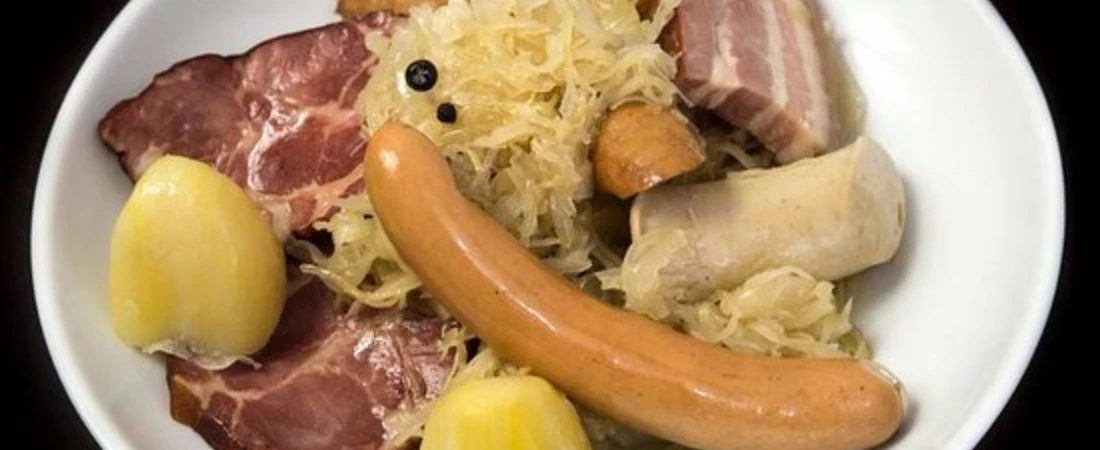
Flammekueche (Tarte Flambée)
Flammekueche, also known as tarte flambée, is Mulhouse’s signature dish. It features a thin, crispy dough topped with crème fraîche, onions, and lardons (small strips of bacon). Some variations include cheese, mushrooms, or herbs. Originating from Alsace, this dish reflects Germanic culinary influences and is often cooked in wood-fired ovens for an authentic taste. Popular spots to enjoy flammekueche include:
- Brasserie Au Vieux Strasbourg, 3 Rue du Sauvage, 68100 Mulhouse, France
- L’Alsacien, 10 Rue de la Moselle, 68100 Mulhouse, France
It is a perfect dish for lunch or dinner, offering a light yet flavorful introduction to Alsatian cuisine.
Choucroute Garnie
Choucroute garnie is a traditional Alsatian dish made with sauerkraut, sausages, and salted pork. The dish reflects Mulhouse’s Germanic heritage and is particularly popular during colder months. It is hearty and flavorful, often paired with local mustard and bread. Recommended restaurants for choucroute garnie include:
- Winstub La Petite Venise, 6 Place de la Réunion, 68100 Mulhouse, France
- Restaurant Le Bistrot du Marché, 4 Place de la Réunion, 68100 Mulhouse, France
Visitors should try it with a glass of Alsatian Riesling to complement the tangy flavors of sauerkraut.
Baeckeoffe
Baeckeoffe is a traditional casserole of marinated meats (pork, beef, and lamb) slow-cooked with potatoes, onions, and Alsatian white wine. Served in ceramic pots, the dish was historically prepared on Sundays and left in communal ovens to cook slowly. Recommended venues include:
- La Table d’Olivier, 6 Place de la Réunion, 68100 Mulhouse, France
- Auberge du Lion, 5 Rue des Franciscains, 68100 Mulhouse, France
The slow cooking process ensures tender meat and deeply infused flavors, making it a must-try for food enthusiasts.
Pretzels and Street Snacks
Soft pretzels are a popular snack in Mulhouse, reflecting German influence on local cuisine. They are often sold in bakeries and street markets, sometimes sprinkled with coarse salt or filled with cheese. They are ideal for a quick bite while exploring the city. Top places to try pretzels include:
- Boulangerie-Pâtisserie Aeschlimann, 12 Rue du Sauvage, 68100 Mulhouse, France
- Marché du Canal Couvert, 12 Rue de la République, 68100 Mulhouse, France
Pretzels pair perfectly with local beers or apple cider, providing an authentic street-food experience.
Alsatian Wines (Riesling, Gewürztraminer)
Alsace is famous for its white wines, particularly Riesling and Gewürztraminer. These wines are often dry, aromatic, and pair well with local cuisine. Mulhouse offers wine tasting experiences in restaurants, wine bars, and local shops. Recommended spots include:
- Cave des Hospices, 18 Rue de la Moselle, 68100 Mulhouse, France
- Bar à Vins L’Avant-Goût, 7 Rue du Sauvage, 68100 Mulhouse, France
Visitors should sample wines with traditional dishes like choucroute garnie or flammekueche for a complete Alsatian experience.
Local Beers and Breweries
Mulhouse also boasts a thriving craft beer scene. Local breweries produce a variety of ales, lagers, and specialty beers. Beer tasting is popular in pubs and brewery tours. Recommended venues include:
- Brasserie la Grenouille, 9 Rue du Sauvage, 68100 Mulhouse, France
- Pub Le Carré, 5 Rue de la Moselle, 68100 Mulhouse, France
Sampling local beers provides insight into regional brewing traditions and complements Alsatian street snacks.
Traditional Winstubs
Winstubs are traditional Alsatian wine bars serving local dishes in a cozy, rustic environment. They reflect the city’s cultural heritage and are perfect for sampling multiple specialties in one visit. Popular winstubs include:
- Winstub La Petite Venise, 6 Place de la Réunion, 68100 Mulhouse, France
- Winstub Chez Yvonne, 8 Rue de la Moselle, 68100 Mulhouse, France
Winstubs often feature communal seating, offering a warm atmosphere for locals and tourists alike.
Recommended Restaurants with Addresses
To enjoy a full culinary journey in Mulhouse, consider visiting these restaurants:
- L’Alsacien, 10 Rue de la Moselle, 68100 Mulhouse, France
- Brasserie Au Vieux Strasbourg, 3 Rue du Sauvage, 68100 Mulhouse, France
- La Table d’Olivier, 6 Place de la Réunion, 68100 Mulhouse, France
- Winstub La Petite Venise, 6 Place de la Réunion, 68100 Mulhouse, France
These venues offer authentic flavors, comfortable settings, and attentive service.
Food Markets and Bakeries
Mulhouse has vibrant markets and bakeries that offer fresh Alsatian products. Markets like Marché du Canal Couvert provide local cheeses, charcuterie, pastries, and wines. Bakeries sell pretzels, breads, and traditional desserts. Recommended spots:
- Marché du Canal Couvert, 12 Rue de la République, 68100 Mulhouse, France
- Boulangerie-Pâtisserie Aeschlimann, 12 Rue du Sauvage, 68100 Mulhouse, France
Exploring markets allows visitors to sample foods at affordable prices and experience the local way of life.
Dining Tips and Etiquette
When dining in Mulhouse, it’s customary to greet staff with a polite “Bonjour” and wait to be seated. Lunch hours typically start at noon, and dinner begins around 7:00 PM. Sharing dishes in winstubs is common, and ordering a glass of local wine with meals is encouraged. Reservations are recommended for popular restaurants, especially during weekends and festive seasons. Sampling a variety of dishes ensures a well-rounded culinary experience, from hearty choucroute to sweet pastries.
Culture & Museums – Beyond Cars and Trains
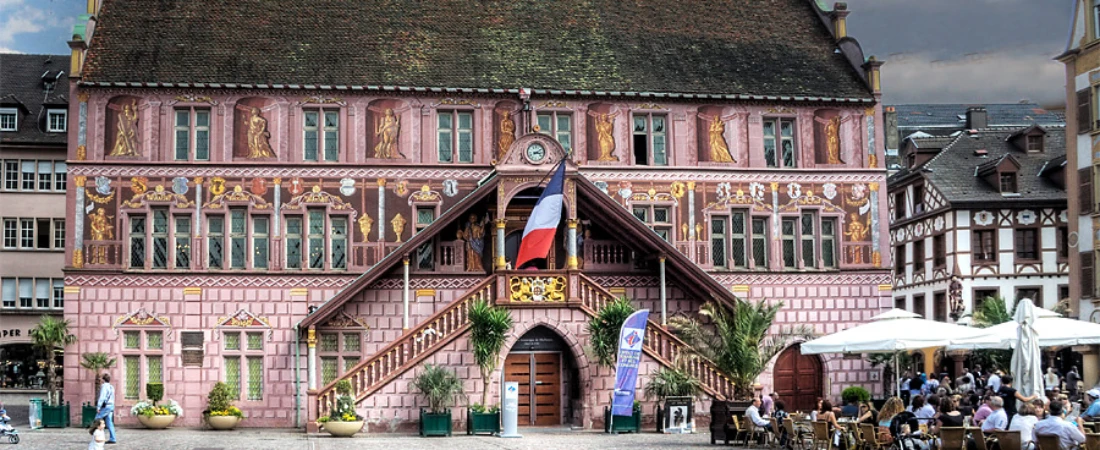
Musée de l’Impression sur Etoffes
The Musée de l’Impression sur Etoffes is a unique museum dedicated to the history of textile printing, reflecting Mulhouse’s industrial legacy. Housed in a 19th-century building, it preserves machines, stencils, patterns, and fabrics used in textile production. Visitors can explore demonstrations of traditional printing techniques, learn about the evolution of textile technology, and view historical collections of printed fabrics. The museum highlights how Mulhouse became a global textile hub and educates visitors about industrial craftsmanship.
Address: 14 Rue Jean-Jacques Henner, 68100 Mulhouse, France
Musée Historique de Mulhouse
The Historical Museum of Mulhouse offers insights into the city’s social, political, and industrial development. Exhibits cover Mulhouse’s time as an independent republic, its textile industry, and cultural evolution. The museum features artifacts, paintings, and documents that illustrate daily life, civic milestones, and industrial achievements. Guided tours are available, providing in-depth knowledge about Mulhouse’s unique history in the Alsace region.
Address: 2 Place de la Réunion, 68100 Mulhouse, France
Kunsthalle Mulhouse
Kunsthalle Mulhouse is a contemporary art museum showcasing modern and avant-garde artworks. It features rotating exhibitions from local and international artists, including paintings, sculptures, and multimedia installations. The museum serves as a cultural hub, hosting workshops, lectures, and artist talks. Visitors can experience a contrast between Mulhouse’s industrial past and its vibrant contemporary art scene, making it a must-visit for art enthusiasts.
Address: 1 Rue de la Sinne, 68100 Mulhouse, France
Local Art Galleries
Mulhouse is home to numerous independent art galleries that celebrate regional creativity. Galleries such as Galerie 42 and Galerie Stadler showcase works by local painters, photographers, and sculptors. These spaces provide opportunities to engage with artists, purchase original artworks, and attend exhibitions or workshops. Walking tours of galleries in the city center offer an immersive cultural experience.
Addresses:
- Galerie 42, 42 Rue de la Sinne, 68100 Mulhouse, France
- Galerie Stadler, 3 Rue des Franciscains, 68100 Mulhouse, France
Cultural Festivals
Mulhouse hosts multiple cultural festivals throughout the year. Events include the European Night of Museums, jazz and music festivals, and textile-themed exhibitions. These festivals often combine performances, workshops, and open museums, offering a unique opportunity to experience the city’s creativity and heritage. They reflect the fusion of French, German, and Swiss influences that shape Mulhouse’s identity.
Music and Theater Venues
Mulhouse offers diverse venues for music and theater, from classical performances to contemporary shows. The Théâtre de la Sinne and La Filature cultural center host concerts, theatrical performances, and dance events. Local bars and cafés often feature live music, blending casual social spaces with artistic performances. Visitors can enjoy local talent and international acts, adding vibrancy to the city’s cultural landscape.
Addresses:
- Théâtre de la Sinne, 1 Rue de la Sinne, 68100 Mulhouse, France
- La Filature, 19 Rue de la Filature, 68200 Mulhouse, France
German-Swiss Cultural Influence
Mulhouse’s culture reflects its proximity to Germany and Switzerland. Architectural styles, culinary traditions, and local customs are influenced by both neighbors. Museums often highlight this cross-border heritage, and festivals celebrate regional music, art, and crafts. Visitors can observe bilingual signage, experience Alsatian dialects, and enjoy dishes blending French, German, and Swiss flavors. This tri-border influence enriches Mulhouse’s cultural offerings.
Local Workshops and Artisan Crafts
Mulhouse is known for traditional craftsmanship, particularly textiles, ceramics, and woodworking. Workshops offer hands-on experiences where visitors can learn printing, weaving, or painting techniques. Artisans sell handmade products, allowing tourists to purchase unique souvenirs. Workshops often coincide with museum visits, providing an educational and interactive cultural experience.
Addresses:
- Atelier du Textile, 15 Rue des Franciscains, 68100 Mulhouse, France
- La Maison des Artisans, 8 Rue de la Sinne, 68100 Mulhouse, France
Seasonal Exhibitions
Museums and galleries in Mulhouse host seasonal exhibitions, showcasing temporary collections or thematic displays. Examples include textile design retrospectives, contemporary art showcases, and historical photography exhibitions. Checking museum calendars in advance allows visitors to plan around unique cultural experiences, ensuring a rich and varied itinerary.
Visitor Tips and Opening Hours
Most cultural sites and museums in Mulhouse are open Tuesday through Sunday, generally from 10:00 AM to 6:00 PM. Many museums offer discounted or free admission on the first Sunday of each month. Comfortable shoes are recommended for walking tours, and photography policies should be checked at each site. Combining museum visits with local galleries and cultural events maximizes the experience, offering a comprehensive view of Mulhouse’s heritage and contemporary arts scene.
Shopping – Textiles, Markets, and Crafts
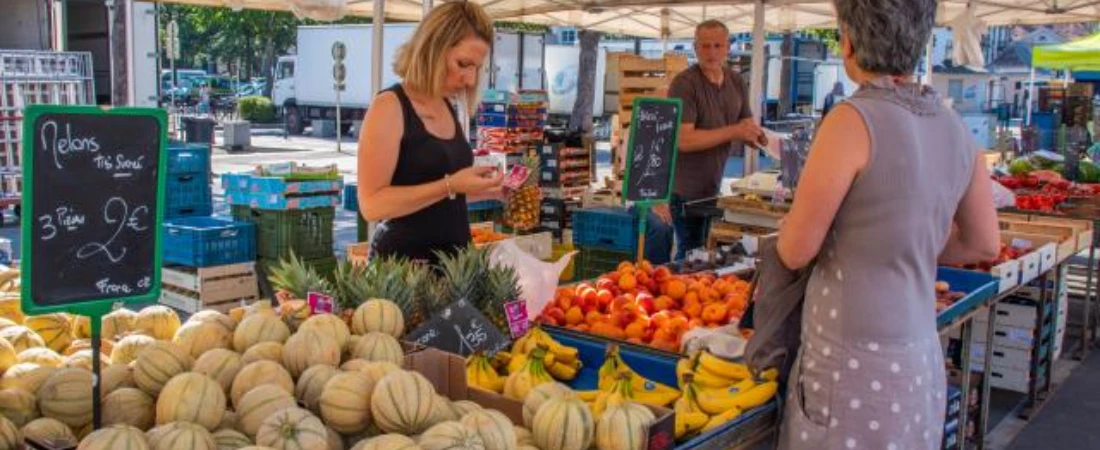
Textile and Fabric Shops
Mulhouse is historically known as a textile hub, earning the nickname “French Manchester.” The city retains its reputation with numerous fabric and textile shops, offering everything from silk and cotton to decorative patterns. Shops like Tissus Lina and Marché du Tissu feature high-quality fabrics suitable for tailoring, crafts, and interior design. Visitors can explore traditional Alsatian prints, modern fabrics, and industrial textiles that reflect Mulhouse’s historic industry.
Addresses:
- Tissus Lina, 20 Rue du Sauvage, 68100 Mulhouse, France
- Marché du Tissu, 12 Rue de la République, 68100 Mulhouse, France
Local Markets
Mulhouse has vibrant markets offering fresh produce, artisanal goods, and regional specialties. Marché du Canal Couvert is particularly famous for local foods, cheeses, wines, and baked goods. Markets provide visitors with the chance to interact with locals, taste regional delicacies, and purchase souvenirs. Weekend markets are lively, attracting both residents and tourists seeking authentic experiences.
Address: Marché du Canal Couvert, 12 Rue de la République, 68100 Mulhouse, France
Souvenir Shops
Souvenir shops in Mulhouse sell a variety of items, from Alsatian pottery and textiles to miniature cars and model trains inspired by the city’s museums. Popular shops include Boutique Mulhousienne and Alsace Souvenirs, offering handcrafted products that reflect local culture. These items make excellent gifts or keepsakes of a Mulhouse visit.
Addresses:
- Boutique Mulhousienne, 5 Place de la Réunion, 68100 Mulhouse, France
- Alsace Souvenirs, 8 Rue du Sauvage, 68100 Mulhouse, France
Artisanal Products and Handicrafts
Mulhouse’s artisans produce high-quality handicrafts including ceramics, jewelry, textiles, and woodwork. Shops like La Maison des Artisans offer unique pieces made by local craftsmen. Visitors can watch artisans at work, purchase handmade products, and attend workshops for a hands-on experience. Craftsmanship reflects the city’s historical and cultural heritage, merging industrial techniques with artistic expression.
Address: La Maison des Artisans, 8 Rue de la Sinne, 68100 Mulhouse, France
Fashion Boutiques
Fashion lovers can explore local boutiques featuring clothing, shoes, and accessories from regional designers. Rue du Sauvage and Rue de la Moselle are prime streets for boutique shopping. Stores often showcase French and Alsatian styles, blending contemporary fashion with traditional aesthetics. Local boutiques provide personalized service and curated collections, ideal for finding unique clothing items.
Specialty Food Shops
Beyond markets, Mulhouse has specialty shops offering local delicacies such as Alsatian wines, beers, cheeses, and pastries. Stores like Cave des Hospices and Pâtisserie Aeschlimann allow visitors to purchase authentic regional foods to enjoy at home. These shops often provide tasting opportunities and knowledgeable staff to explain products’ origins and preparation.
Addresses:
- Cave des Hospices, 18 Rue de la Moselle, 68100 Mulhouse, France
- Pâtisserie Aeschlimann, 12 Rue du Sauvage, 68100 Mulhouse, France
Flea Markets and Antique Shops
For collectors and antique enthusiasts, Mulhouse has flea markets and antique shops offering vintage items, furniture, and collectibles. Marché aux Puces de Mulhouse is a must-visit for unique finds, including historical textiles, old machinery parts, and decorative objects. Browsing these markets provides insight into local history and offers one-of-a-kind souvenirs.
Address: Marché aux Puces, 15 Rue de la Fonderie, 68100 Mulhouse, France
Christmas and Seasonal Markets
During winter, Mulhouse hosts Christmas markets featuring handmade crafts, ornaments, and festive foods. Place de la Réunion becomes a central hub for holiday shopping, offering artisan gifts, mulled wine, and traditional treats. Seasonal markets are perfect for experiencing local culture while buying unique items unavailable elsewhere.
Address: Place de la Réunion, 68100 Mulhouse, France
Shopping Tips for Visitors
When shopping in Mulhouse, visitors should carry cash for small market purchases, although most shops accept cards. Early visits help avoid crowds, particularly at weekend markets. Browsing local boutiques and markets allows for discovering unique textiles, crafts, and specialty foods. Combining market visits with museum tours and culinary experiences maximizes the cultural immersion.
Combining Shopping with Sightseeing
Mulhouse’s shopping districts are often close to cultural landmarks and restaurants. Rue du Sauvage, Place de la Réunion, and surrounding streets allow visitors to shop while exploring historic architecture and local cafés. Walking between shops, markets, and museums provides a seamless blend of commerce, culture, and leisure, making shopping an integral part of the Mulhouse experience.
Final Thoughts
Mulhouse is a city where history, culture, and modern life converge. From the world-renowned Cité de l’Automobile and Cité du Train to the lively Place de la Réunion, it offers a unique blend of industrial heritage and vibrant city life. Museum lovers will be fascinated by the extensive collections of vintage cars, locomotives, and textiles, while food enthusiasts can indulge in authentic Alsatian cuisine, including flammekueche, choucroute, and local wines.
The city’s shopping districts and markets reflect Mulhouse’s industrial roots and contemporary creativity, offering fabrics, artisan crafts, and specialty foods. Meanwhile, the nightlife scene, featuring student bars and casual pubs, provides a lively social atmosphere for evenings. Nature enthusiasts can take advantage of the city’s proximity to the Vosges mountains and the Rhine River, offering outdoor exploration and scenic beauty just a short drive away.

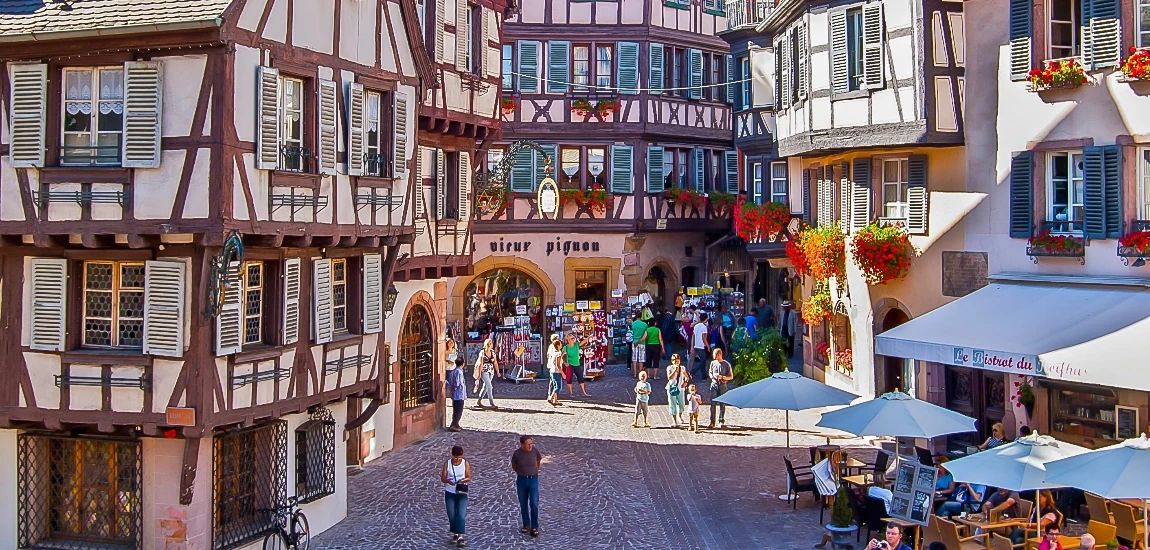
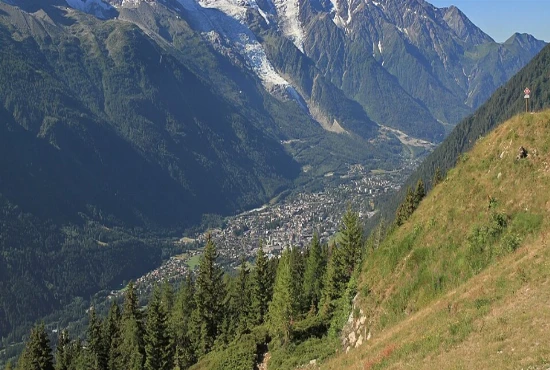
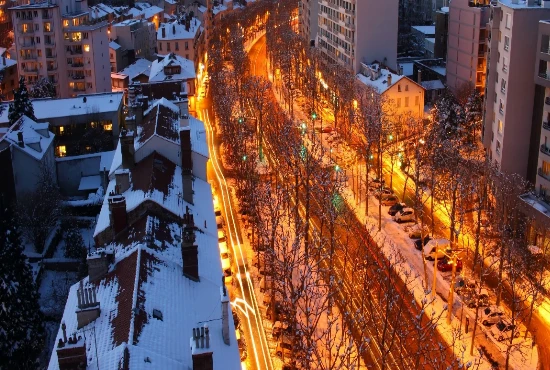


Leave a Reply